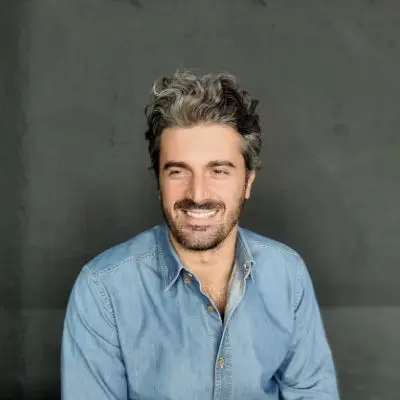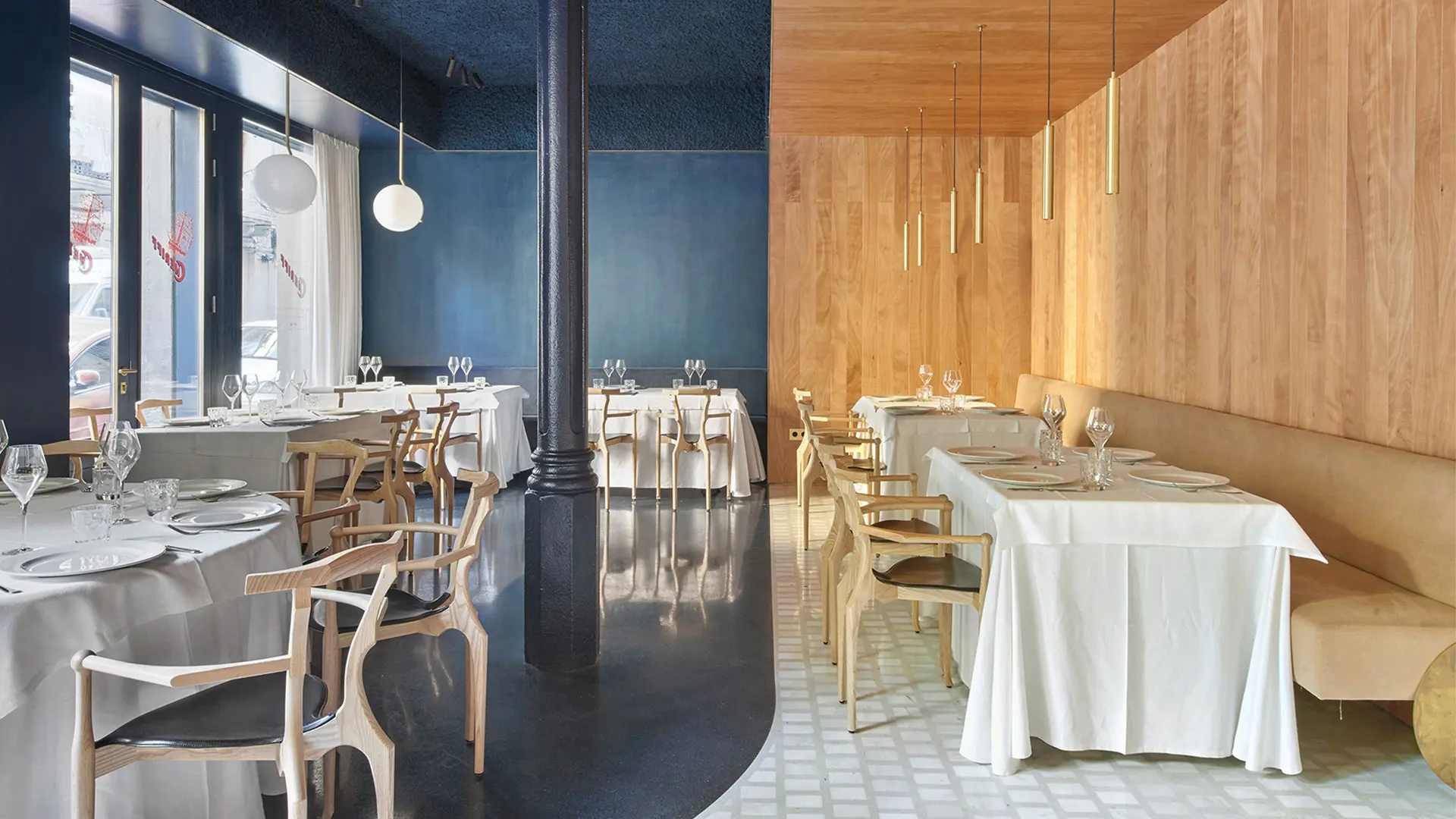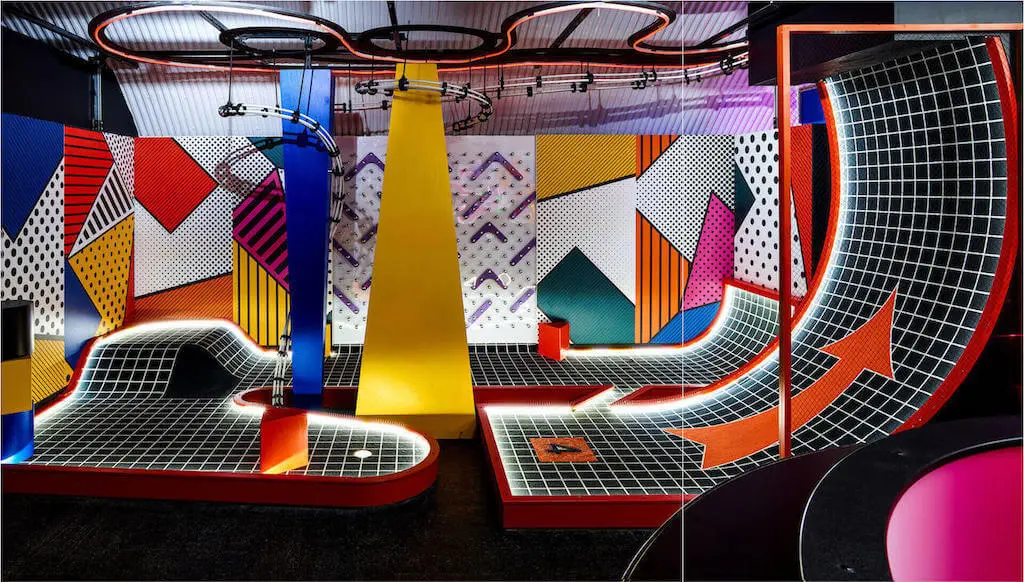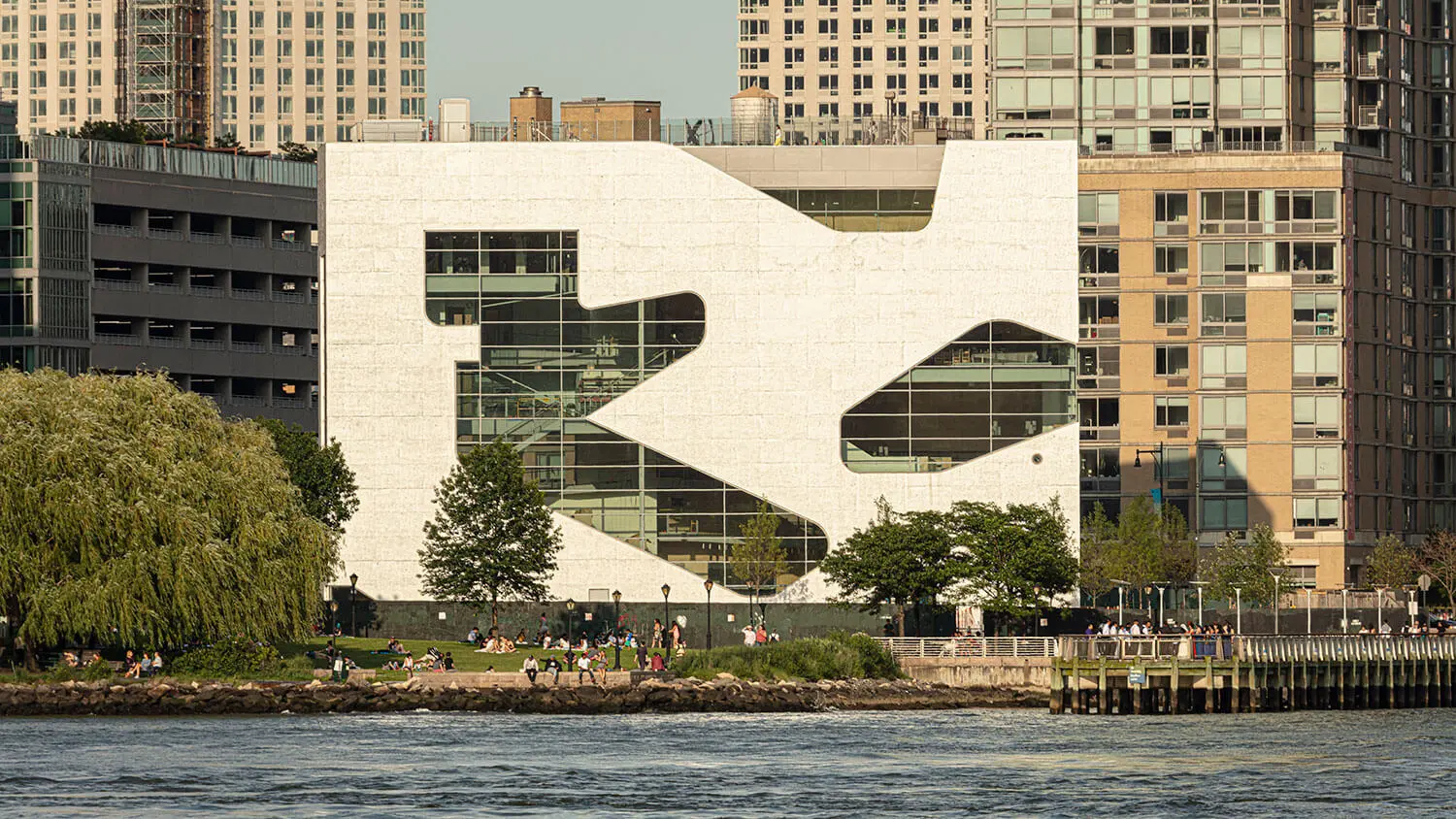‘Under the Surface’: an installation about ethics, sustainability and technology
At the forthcoming Milan Design Week, The Salone del Mobile.Milano will showcase a significant installation that emphasizes the role and impact of water as a crucial resource within the bathroom furniture industry.
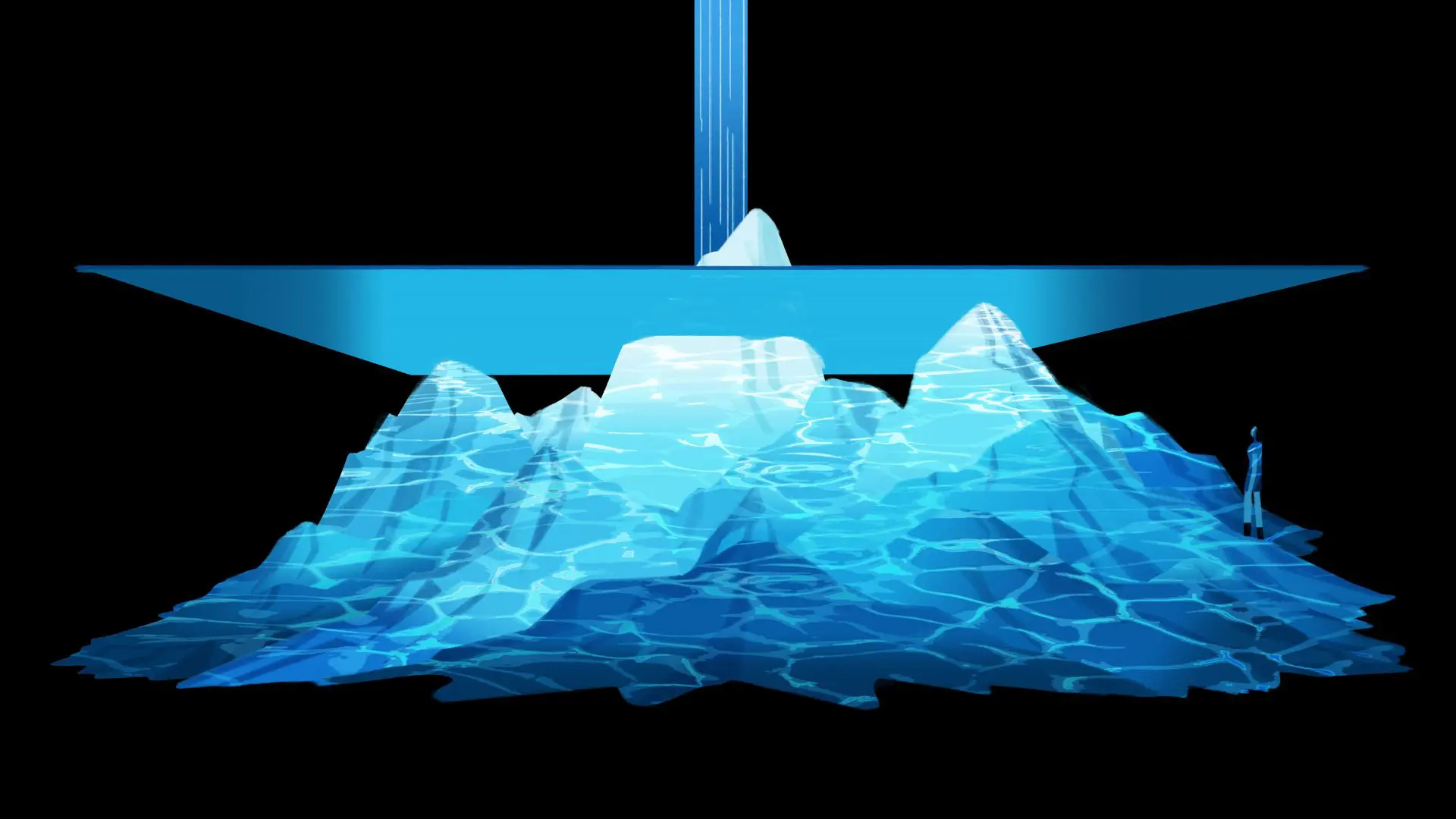
What progress has been made in design, especially in bathroom design, towards water sustainability? These inquiries lay the groundwork for the 62nd Salone del Mobile.Milano, which aims to assess the state of bathroom manufacturing through the “Under the Surface” installation. This project, a collaboration between Accurat, Design Group Italia, and Emiliano Ponzi (Salotto NYC), is presented in Pavilion 10 at the International Bathroom Exhibition.
The ‘Under the Surface’ exhibit is designed to resemble an underwater island, representing water as both a vital resource and a challenge linked to our interactions with it. Set against a backdrop of shifting light reflections, the island serves not merely as a captivating visual tale but also as a conduit for sharing significant narratives that aim to enlighten visitors about the effects of our daily water usage habits. These light reflections, continuously moving across the landscape’s contours, are ingeniously crafted to visualize global water consumption data, transforming abstract statistics into a poignant and immersive experience.
We were eager to delve deeper, to grasp the project’s inception, its challenges, and the objectives its creators aimed to achieve, not only with respect to the attendees of the fair but also concerning the bathroom exhibitors. These exhibitors are, to an extent, additionally tasked with addressing environmental concerns, alongside adapting to shifts in consumer preferences and the requirements of industry professionals. Consequently, we conducted interviews with all the involved parties.
What is the purpose behind the Salone del Mobile’s Under the Surface initiative? How does it intend to impact the visitors and the exhibiting companies differently?
Maria Porro (President of Salone del Mobile.Milano):
“Under the Surface will be an immersive and highly emotionally impactful installation, capable of effectively playing out the numbers relating to the bathroom industry, to the theme of water saving and to product design. In this room, small everyday gestures related to objects designed and produced intelligently can make all the difference. Here, we will wonder how a tap can be designed to cut water consumption, or how the design of a tap can change the behaviours of people who turn on this particular device every day to wash, etc.
Then there’s the production process. So what are the new frontiers in this regard? By visualising the industry data in a poetic way and describing the problems, we will illustrate how important it is to know how to bring together knowledge, skills and technologies in order to generate projects and products that will improve everyone’s lives. Inside this aquatic world, at Salone del Mobile.Milano, where visitors will be able to walk and relax, all these themes will be flagged up and narrated because today, more than ever, we must be aware of the influence of our daily choices on the future.”
What key components do you believe are crucial for creating a memorable and impactful sustainability-related exhibition project, specifically one focused on water?
Emiliano Ponzi (Salotto NYC):
“I believe any exhibition or art installation need to have 2 main features: a meaningful storytelling and a strong aesthetics. To engage the audience it has to be, in a way, self-explaining otherwise it fails its first goal that is intentional communication. My personal believe is to give back people the conceptual effort I made to synthesise the complexity of the world into a piece of art. It has to be felt before being rationally understood so less written explanations in the caption otherwise it’s not art but an essay.

That is especially true when the topic is so broad and multi level as sustainable water consumption related to new bathroom technology. The ‘Under the Surface’ art installation itself, the container of information, is an underwater archipelago, an hidden series of islands, it has an immediate connection to the invisible innovations shown at the Salone Internazionale del Bagno in order to save water in our daily use of it.
Then we created 2 series of contents: context data regarding access to water resources, extracted resources and rainfall per country displayed as fishes, geyser and drops projected on the islands surface. And more detailed data sets connected to the innovation to reduce the consumption of water that are built inside the islands and visible as holograms and animations. An engaging way to tell an important story.”
Water has the ability to exist in multiple states and shapes. What inspired the development of the ‘Under the Surface’ concept?
Emiliano Ponzi (Salotto NYC):
“Water is humanity’s primary good. It becomes an element of wonder, for its impalpable shape, for the emerged lands that connects, for the worlds hidden beneath, and for the surface made of reflections and refractions, the first mirror where man recognized himself. The title refers to the complexity of the world we live in and to the need, to be aware, to go deeper into society issues since those affect us, the future generations and every living creatures on the planet.”
In today’s world, unlike water, data appears to be boundless. Which data did you select to illustrate the objective of ‘Under the Surface’ and why?
Gabriele Rossi (Accurat’s Founding & Managing Director):
“To populate the installation with data-driven stories we worked with multiple and interconnected sources.
First visible at a glance, water consumption data provided by the World Bank is projected onto the relief features of the island in three different areas. Data on per capita availability of freshwater from renewable sources take the form of imaginary schools of fish grouped by Country and Region, according to the time frame from 1961-2019. Their movement predicts the possible end of this resource unless virtuous behaviors are adopted and technological solutions that encourage them are embraced. Data on the withdrawal of freshwater in the domestic and industrial sectors gather and organize into the form of suggestive geysers, uncontrollable phenomena meant to stimulate reflection that, while nature is uncontrollable, the relationship between man and nature can and must be controlled. Lastly, data on global precipitation in cubic millimeters become intangible droplets destined to fall on a plane to represent the geographical area wet by the examined rainfall.
Then, after further exploration, visitors will encounter three caves carved into the same reliefs, where additional datasets describe the state of the art, the technological innovations, and manufacturing advancements in the bathroom furnishings sector through the use of dynamic visualization, abstract marine landscapes printed in 3D, and holographic projections. In the three caves, stories begin with three specific water-related challenges. Firstly, the reduction of water consumption: over 2.3 billion people in the world do not have access to a source of potable water and 3.6 billion live without safe sanitary services – two facts that make the lack of water security a real global emergency. How are companies and designers tackling this problem?

The second challenge concerns the reduction of energy consumption: in 2023, global CO2 emissions reached a new record of 37.4 Gt, with an annual increase of about 410 million tons. Thus, many bathroom furnishing companies are aligning with the United Nations Sustainable Development Goal 7, which pertains to actions aimed at ensuring access for all to affordable, reliable, and sustainable energy systems. The third challenge focuses on the reuse and recycling of materials. It is estimated that by 2050 the total weight of plastic in the oceans will exceed that of fish. This is just one of many alarming statistics that highlight the critical need for effective waste management and reuse strategies and the industry is moving in this direction.”
Data frequently seems impersonal and hard to grasp. Based on your expertise, how can data be made genuinely accessible to the majority? In what ways does it act as a catalyst for change, truly engaging people’s minds?
Gabriele Rossi (Accurat’s Founding & Managing Director):
“Information is essentially a reflection of reality, capturing a snapshot of existence much like a photograph freezes a brief instant. Numbers serve as stand-ins, symbolizing perspectives — a concept that is often overlooked. Ignoring the inherent complexities and subtleties of data, and simply inserting figures into graphs, is akin to critiquing a film by examining the film stock’s chemical makeup. As data pervades every aspect of our lives, it becomes imperative to explore innovative ways to present it as distinctive, relevant, and personal.
The manner in which we present this data is critical, as it bridges the gap between abstract figures and understandable narratives. In doing so, we ought to welcome its intricacies instead of shying away from them. Rich and atypical data representations encourage a slower, more deliberate engagement — a valuable pursuit in a time when attention spans are dwindling. By crafting visuals that demand thoughtful interaction and personal connection, we invite a deeper appreciation for the data’s true worth and the realities it depicts.”
What was the most significant challenge in converting concepts and data into an experience designed to stimulate reflection and foster awareness?
Gabriel Zangari (DGI NY HQ’s Managing Director) + Chris Miller (DGI’s Creative Director):
“At Design Group Italia we are more used to working with international product and service companies, so when the chance to work on a prestigious event like Salone del Mobile came about, with our partners at Salotto in NY, we obviously jumped at it. For us this is a completely different type of project that is extremely stimulating from both a design point of view and of course the subject.
To bring the concept to reality, we began with the context and how this should relate to the furniture fair and the visitors. It was immediately evident that the key was to create an experience that takes the visitor temporarily out of the context of the fair and transport them to a different world, giving them the right “mental space” to reflect on the message of the importance of water as a resource.

Therefore the most significant challenge was to create a world that has to be internally coherent between the design of the structure, the lighting effects, data projections, ecc, so that it becomes authentic and believable for the visitor. To keep true to the artistic vision, this meant bringing together innovative construction methods, smart use of technology and a constant alignment between ourselves, Emiliano and Accurat as the project was taken from the concept to the reality.
The sensation of being in a fantastic, archaic, yet real place is amplified by the projections that recreate the movement of water in a series of colourful refractions and waves, creating a place where one can linger, reflect, learn, and be moved emotionally thanks also to projections, holograms and sounds. In addition, visitors will choose their own explorative direction and their own length of stay profiting of an intimate and educational experience, detached from the hectic mood of the Fair.”
Regarding sustainability, it’s evident that a focus on processes is necessary. What approach did you take to develop the ‘Under the Surface’ exhibit layout? How did you ensure the project adhered to eco-sustainability principles in a narrow sense?
Gabriel Zangari (DGI NY HQ’s Managing Director) + Chris Miller (DGI’s Creative Director):
“Regarding sustainability, this is a top priority when it comes to temporary exhibits. In this field, the risk of materialising striking concepts, without considering the impact of their physical construction is extremely high. It was very clear to us from the beginning that temporary exhibits cannot neglect their environmental consequences and that we should have adopted a design approach capable to reconcile the beauty of the final results and effects pf the physical installation with a minimal environment impact.

Thus, we considered the sustainability footprint of “Under The Surface” throughout the whole design process and each construction phases, discussing the environmental impact of every vendor and material we use. We asked questions like: How far away is the vendor or material source? What are the recycling and re-utilization scenarios? What impact will this product have on the environment? The answers to these questions lead us to make informed decisions.
To give you a more detailed picture, we were able to procure all materials and resources locally in the Milan area- absolutely nothing is sourced off-shore. We rented all AV equipment and rigging, so we only used them for the duration of the exhibit. And most importantly, we have already arranged for the mountains used in the installation to be repurposed for construction, build insulation and packaging. This way, the mountains will not go to waste – assured to live another life after our exhibit.”

